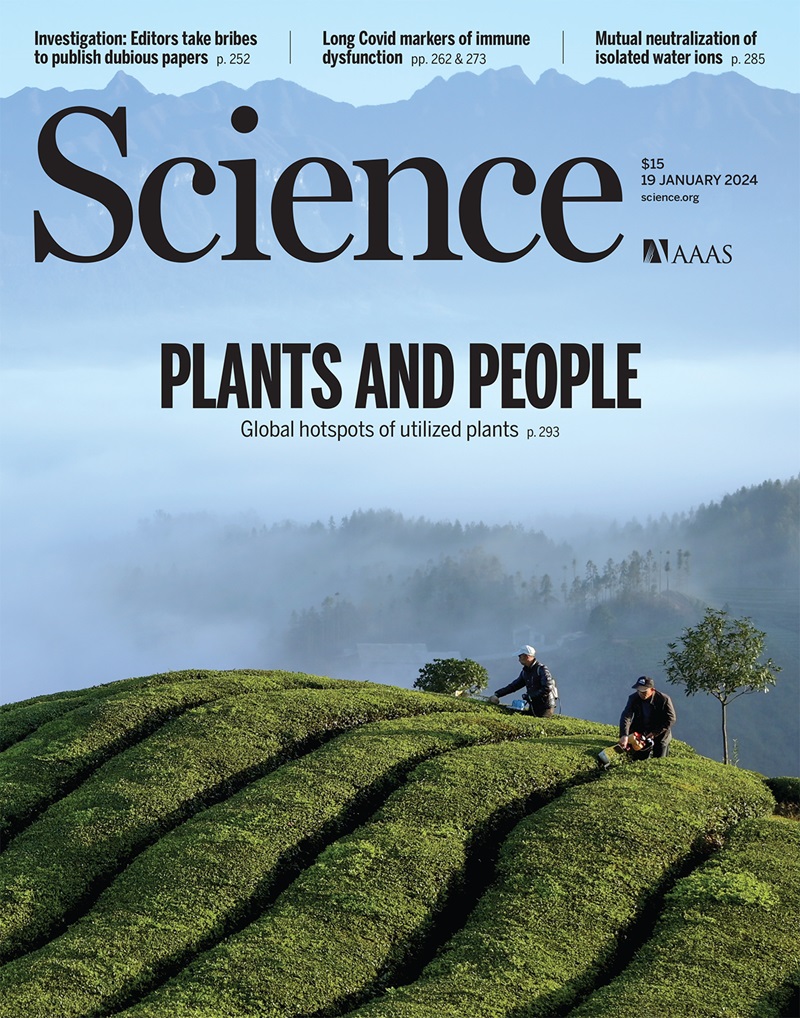Functional biogeography of marine microbial heterotrophs
IF 44.7
1区 综合性期刊
Q1 MULTIDISCIPLINARY SCIENCES
引用次数: 0
Abstract
Heterotrophic bacteria and archaea (“heteroprokaryotes”) drive global carbon cycling, but how to quantitatively organize their functional complexity remains unclear. We generated a global-scale understanding of marine heteroprokaryotic functional biogeography by synthesizing genetic sequencing data with a mechanistic marine ecosystem model. We incorporated heteroprokaryotic diversity into the trait-based model along two axes: substrate lability and growth strategy. Using genetic sequences along three ocean transects, we compiled 21 heteroprokaryotic guilds and estimated their degree of optimization for rapid growth (copiotrophy). Data and model consistency indicated that gradients in grazing and substrate lability predominantly set biogeographical patterns, and we identified deep-ocean “slow copiotrophs” whose ecological interactions control the surface accumulation of dissolved organic carbon.
海洋微生物异养生物的功能生物地理学
异养细菌和古细菌(“异原核生物”)驱动全球碳循环,但如何定量组织其功能复杂性尚不清楚。通过综合基因测序数据和机械海洋生态系统模型,我们对海洋异原核功能生物地理学有了全球范围的了解。我们将异源原核生物多样性纳入基于性状的模型,沿两个轴:底物不稳定性和生长策略。利用3个海洋样带的基因序列,我们编译了21个异原核行会,并估计了它们快速生长(copiotrophy)的优化程度。数据和模型的一致性表明,放牧和基质不稳定性的梯度主要决定了生物地理格局,我们发现了深海“缓慢共养生物”,其生态相互作用控制着表层溶解有机碳的积累。
本文章由计算机程序翻译,如有差异,请以英文原文为准。
求助全文
约1分钟内获得全文
求助全文
来源期刊

Science
综合性期刊-综合性期刊
CiteScore
61.10
自引率
0.90%
发文量
0
审稿时长
2.1 months
期刊介绍:
Science is a leading outlet for scientific news, commentary, and cutting-edge research. Through its print and online incarnations, Science reaches an estimated worldwide readership of more than one million. Science’s authorship is global too, and its articles consistently rank among the world's most cited research.
Science serves as a forum for discussion of important issues related to the advancement of science by publishing material on which a consensus has been reached as well as including the presentation of minority or conflicting points of view. Accordingly, all articles published in Science—including editorials, news and comment, and book reviews—are signed and reflect the individual views of the authors and not official points of view adopted by AAAS or the institutions with which the authors are affiliated.
Science seeks to publish those papers that are most influential in their fields or across fields and that will significantly advance scientific understanding. Selected papers should present novel and broadly important data, syntheses, or concepts. They should merit recognition by the wider scientific community and general public provided by publication in Science, beyond that provided by specialty journals. Science welcomes submissions from all fields of science and from any source. The editors are committed to the prompt evaluation and publication of submitted papers while upholding high standards that support reproducibility of published research. Science is published weekly; selected papers are published online ahead of print.
 求助内容:
求助内容: 应助结果提醒方式:
应助结果提醒方式:


